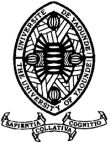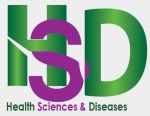Bone Metabolism Profile of Children with Cerebral Palsy in Yaounde (Cameroon)
Profil du Métabolisme Osseux Chez les Enfants avec Paralysie Cérébrale à Yaoundé (Cameroun)
DOI:
https://doi.org/10.5281/hra.v3i1.6283Keywords:
Cerebral Palsy, Bone MetabolismAbstract
RÉSUMÉ
Introduction. Les enfants ayant une paralysie cérébrale sont fréquemment atteints de malnutrition ayant pour conséquence une altération du métabolisme osseux. Ceci les exposerait à des fractures pathologiques, une augmentation de la résorption osseuse, l’ostéoporose, le rachitisme et un retard de croissance. Objectif. Déterminer le profil du métabolisme osseux des enfants atteints de paralysie cérébrale. Matériels et méthodes. Nous avons mené une étude transversale descriptive incluant les enfants atteints de paralysie cérébrale suivis au Centre National de Réhabilitation des Personnes Handicapées de juin à aout 2021. Les données collectées portaient sur les caractéristiques cliniques et les examens biologiques (le métabolisme phosphocalcique (calcémie, phosphorémie), les marqueurs de la formation osseuse (phosphatases alcalines), les marqueurs de la résorption osseuse (calcul de l’indice de Nordin, la parathormone, et la vitamine D). Résultats. Nous avons enrôlé 54 enfants. L’âge moyen était de 36 ± 31,8 mois. La diplégie et la tétraparésie étaient les formes cliniques les plus fréquentes avec une incapacité à s’alimenter chez 57,4% ou à marcher chez 59% des cas. Les anomalies biologiques retrouvées étaient : l’hypocalcémie (45%), l’hypercalcémie (1,8%), l’hypophosphorémie (7,8%), l’hyperphosphorémie (26,9%) ; une hypoparathyroïdie (7,8%) et une hyperparathyroïdie (11,7%) ; une carence en Vitamine D (47,4%) ; une hyperrésorption osseuse avec un indice de Nordin élevé (36,6%). Conclusion. Les enfants avec paralysie cérébrale présentaient de nombreux troubles du métabolisme osseux qu’il faudrait rechercher cliniquement et biologiquement au cours de leur suivi et les prévenir en supplémentant leur alimentation et en les exposant au soleil.
ABSTRACT
Introduction. Children with cerebral palsy frequently suffer from malnutrition, resulting in altered bone metabolism. This exposes them to pathological fractures, increased bone resorption, osteoporosis, rickets and stunted growth. Objective. To describe the bone metabolism profile of children with cerebral palsy. Materials and methods. We conducted a descriptive cross-sectional study including children with cerebral palsy followed at the National Rehabilitation Centre for Disabled Persons from June to August 2021. Data were collected on clinical characteristics and biological examinations (phosphocalcic metabolism (blood calcium, blood phosphorus), markers of bone formation (alkaline phosphatase), markers of bone resorption (calculation of the Nordin index, parathormone, and vitamin D). Results. We enrolled 54 children. The mean age was 36 ± 31.8 months. Diplegia and tetraparesis were the most frequent clinical forms, with an inability to eat in 57.4% of cases and to walk in 59%. The biological abnormalities found were: hypocalcaemia (45%), hypercalcaemia (1.8%), hypophosphaemia (7.8%), hyperphosphaemia (26.9%); hypoparathyroidism (7.8%) and hyperparathyroidism (11.7%); vitamin D deficiency (47.4%); bone hyperresorption with a high Nordin index (36.6). Conclusion. Children with cerebral palsy had numerous bone metabolism disorders that should be investigated clinically and biologically during their follow-up, and prevented by supplementing their diet and exposing them to sunlight.
References
Te Velde A, Morgan C, Novak I, Tantsis E, Badawi N. Early Diagnosis and Classification of Cerebral Palsy: An Historical Perspective and Barriers to an Early Diagnosis. J Clin Med. 2019 Oct 3;8(10):1599.
Oskoui M, Coutinho F, Dykeman J, Jetté N, Pringsheim T. An update on the prevalence of cerebral palsy: a systematic review and meta-analysis. Dev Med Child Neurol. 2013;55(6):509-19.
Nguefack S, Tchiffo AN, Chiabi A, Mah E, Enoh J, Enyama D, et al. Aspects cliniques et étiologiques des infimités motrices cérébrales chez l’enfant à Yaoundé: À propos de 134 cas à l’Hôpital Gynéco-Obstétrique et Pédiatrique de Yaoundé (Cameroun). Health sciences and disease, 16(12015 ;16:1-5.
Mbonda E, Nguefack S, Chiabi A, Djampou NE, Pondy OA, Mbassi AH, et al. Epilepsie chez les enfants atteints d’infirmité motrice cérébrale: à propos de 412 observations à Yaoundé, Cameroun. Clin Mother Child Health. 2011;8:1-5.
Rosenbaum P, Paneth N, Leviton A, Goldstein M, Bax M, Damiano D, Dan B, Jacobsson B. A report: the definition and classification of cerebral palsy April 2006. Dev Med Child Neurol Suppl. 2007;109:8-14.
Polack S, Adams M, O'banion D, Baltussen M, Asante S, Kerac M, Gladstone M, Zuurmond M. Children with cerebral palsy in Ghana: malnutrition, feeding challenges, and caregiver quality of life. Dev Med Child Neurol. 2018;60(9):914-21.
Kakooza-Mwesige A, Tumwine JK, Eliasson AC, Namusoke HK, Forssberg H. Malnutrition is common in Ugandan children with cerebral palsy, particularly those over the age of five and those who had neonatal complications. Acta Paediatr. 2015;104(12):1259-68.
Kana CAN, Deugoue RB, Dongmo FN, Enyama D, Noukeu D, Mah E, Kago D, Mbonda E, Nguefack S. Comorbidities in Children with Cerebral Palsy. Pediatr Oncall J. 2022;19:1-7
Aggarwal S, Chadha R, Pathak, R. Nutritional status and growth in children with cerebral palsy: A review. Int J Med Sci. 2015;4:737‑44.
Aggarwal S, Chadha R, Pathak R. Feeding difficulties among Children with Cerebral Palsy: A Review. Int J Health Sci. 2015;1:9‑12.
Jahan, I., Muhit, M., Karim, T., Smithers-Sheedy, H., Novak, I., Jones, C., et al. What makes children with cerebral palsy vulnerable to malnutrition? Findings from the Bangladesh cerebral palsy register (BCPR). Disabil. 2019; 41:2247‑54.
Fan HC, Lee HS, Chang KP, Lee YY, Lai HC, Hung PL, Lee HF, Chi CS. The Impact of Anti-Epileptic Drugs on Growth and Bone Metabolism. Int J Mol Sci. 2016;17(8):1242.
Esterle L. Calcium et santé osseuse chez l’enfant et l’adolescent. Journal de Pédiatrie et de Puériculture. 2010;23(2):65‑9.
French ZP, Caird MS, Whitney DG. Osteoporosis Epidemiology Among Adults With Cerebral Palsy: Findings From Private and Public Administrative Claims Data. JBMR Plus. 2019;3(11):e10231.
Asagai Y, Yamamoto K, Ohshiro T, Ohshiro T. Bone Metabolism in Cerebral Palsy and the Effect of Light-Emitting Diode (LED) Irradiation. Laser Ther. 2012;21(1):23-31.
Nguefack S, Ngouo TA, Chelo D, Chiabi A, Mah E, Dongmo F, et al et al. Croissance staturo-pondérale des enfants souffrant d’infirmité motrice cérébrale à Yaoundé, Cameroun. Pan African Medical Journal. 2015;22:204.
Gandema S, Sanouo, Ouedraogo AS, Nacro B. Profil épidémiologique et clinique des infirmités motrices cérébrales au centre hospitalier universitaire de Bobodioulasso (Burkina Faso). Mali Med. 2015;30(3):50-4.
Sharawat IK, Sitaraman S. Skeletal Maturation and Mineralisation of Children with Moderate to Severe Spastic Quadriplegia. J Clin Diagn Res. 2016;10(6):SC01-5.
Kim HJ, Choi HN, Yim JE. Food Habits, Dietary Intake, and Body Composition in Children with Cerebral Palsy. Clin Nutr Res. 2018;7(4):266-75.
Sato Y, Kondo I, Ishida S, Motooka H, Takayama K, Tomita Y, Maeda H, Satoh K. Decreased bone mass and increased bone turnover with valproate therapy in adults with epilepsy. Neurology. 2001;57(3):445-9.
Tsukahara H, Kimura K, Todoroki Y, Ohshima Y, Hiraoka M, Shigematsu Y, Tsukahara Y, Miura M, Mayumi M. Bone mineral status in ambulatory pediatric patients on long-term anti-epileptic drug therapy. Pediatr Int. 2002;44(3):247-53.
Langley CK, Onambélé-Pearson GL, Sims DT, Hussain A, Buffey AJ, Bardwell HL, Morse CI. Musculoskeletal Health in Active Ambulatory Men with Cerebral Palsy and the Impact of Vitamin D. Nutrients. 2021;13(7):2481..
Blair E, Langdon K, McIntyre S, Lawrence D, Watson L. Survival and mortality in cerebral palsy: observations to the sixth decade from a data linkage study of a total population register and National Death Index. BMC Neurol. 2019;19(1):111.
Karim T, Jahan I, Dossetor R, Giang NTH, Van Anh NT, Dung TQ, Chau CM, Van Bang N, Badawi N, Khandaker G, Elliott E. Nutritional Status of Children with Cerebral Palsy-Findings from Prospective Hospital-Based Surveillance in Vietnam Indicate a Need for Action. Nutrients. 2019;11(9):2132.
Almuneef AR, Almajwal A, Alam I, Abulmeaty M, Bader BA, Badr MF, Almuammar M, Razak S. Malnutrition is common in children with cerebral palsy in Saudi Arabia - a cross-sectional clinical observational study. BMC Neurol. 2019;19(1):317.
Valdiguié P, France de la Farge, Solera ML, Lagente M, De Graeve J, Levade T. Biochimie clinique. Médicales inter nationales; 2000.
Downloads
Published
How to Cite
Issue
Section
License
Copyright (c) 2024 Kago-Tague Daniel Armand, Sihom Nguidom Yolande, Fojo Talongong Baudelaire, Kamtchum-Tatuene Joseph, Kouam-Mewa Jeannette Euranie, Nguefack Seraphin, Ama Moor Vicky Joceline

This work is licensed under a Creative Commons Attribution-NoDerivatives 4.0 International License.
Authors who publish with this journal agree to the following terms:
- Authors retain copyright and grant the journal right of first publication with the work simultaneously licensed under a Creative Commons Attribution License CC BY-NC-ND 4.0 that allows others to share the work with an acknowledgement of the work's authorship and initial publication in this journal.
- Authors are able to enter into separate, additional contractual arrangements for the non-exclusive distribution of the journal's published version of the work (e.g., post it to an institutional repository or publish it in a book), with an acknowledgement of its initial publication in this journal.
- Authors are permitted and encouraged to post their work online (e.g., in institutional repositories or on their website) prior to and during the submission process, as it can lead to productive exchanges, as well as earlier and greater citation of published work










